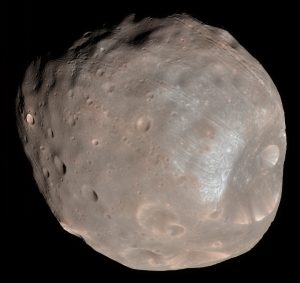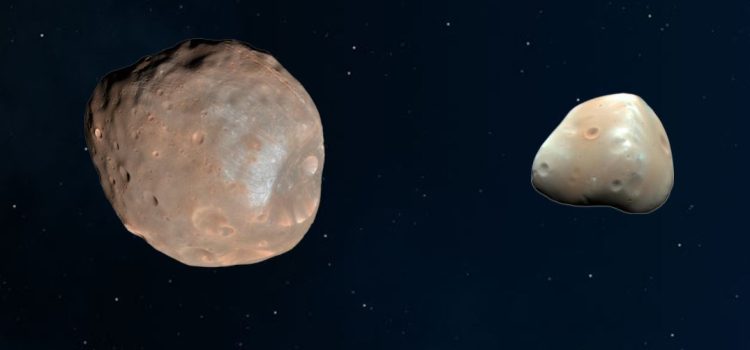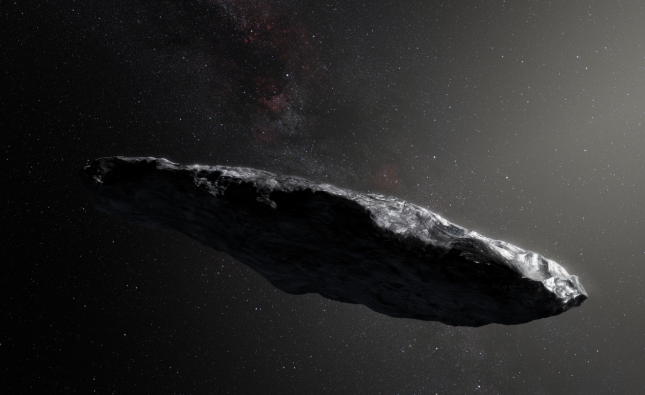
Introduction
Mars, the Red Planet, has two small moons named Phobos and Deimos. These moons look like asteroids rather than round planets. For over a century, scientists have wondered how they formed. Did Mars capture them from the solar system, or were they born after a giant impact? Unraveling the mystery of their origins helps us learn more about the early solar system. In this article, we explore the main theories, review the evidence, and highlight missions that aim to answer this cosmic puzzle. By the end, you will understand why these tiny moons matter so much.
The Moons of Mars

Phobos and Deimos are tiny compared to Earth’s moon. Phobos measures about 22 kilometers across, while Deimos is even smaller at 12 kilometers. Both moons have irregular shapes, covered in craters and grooves. Phobos orbits very close to Mars—only about 6,000 kilometers above its surface—circling the planet in just 7.6 hours. Deimos orbits farther out, taking about 30.3 hours to complete one circuit. Their odd shapes and dark surfaces make them look like captured asteroids, but their true origins remain debated.
Captured Asteroids Theory
One long-standing idea is that Phobos and Deimos were once asteroids. According to this theory, Mars’s gravity pulled them into orbit long ago. Many small bodies in the asteroid belt share similar shapes and colors. Mars may have passed through this swarm and trapped two of them.
Strengths of the theory:
- Shape and composition: Both moons resemble many carbon-rich asteroids.
- Surface features: Craters on Phobos and Deimos match those on captured asteroids.
Challenges to the theory:
- Orbital paths: Captured bodies usually have elongated and tilted orbits. Yet Phobos and Deimos move in almost perfect circles near Mars’s equator.
- Energy loss: To capture an asteroid, Mars must slow it down. This requires extra gas or friction—conditions not easy to find in Mars’s early environment.
While the captured-asteroid idea explains some features, it struggles to account for how these moons ended up in such neat, stable orbits.
Impact Debris Theory
An alternative idea suggests that Phobos and Deimos formed after a giant impact. In this scenario, a large body slammed into Mars long ago. The collision threw rock and dust into orbit around Mars. Over time, this debris clumped together to form the two moons.
Key points of this theory:
- Circular orbits: Debris from a collision would naturally settle into a disk around Mars’s equator, leading to the near-circular orbits we see today.
- Similar materials: Samples returned from Mars’s surface and meteorites show signs of a violent past. Some dust on Phobos may match material from Mars itself.
Open questions:
- Mass and size: Could enough debris form two moons rather than one large moon?
- Timing: When did this impact occur? Estimates range from 4.3 to 3.5 billion years ago. Pinpointing the date is hard without samples.
Impact simulations run on supercomputers continue to refine this theory. Many scientists now favor it because it neatly explains the moons’ orbits and composition.
Evidence and Observations
Scientists combine telescope data, spacecraft imagery, and computer models to test these theories.
- Spectroscopy: Instruments on telescopes and orbiters measure light reflected from the moons. Phobos and Deimos show spectra that hint at both asteroid-like material and possible Martian dust.
- High-Resolution Images: NASA’s Mars Reconnaissance Orbiter (MRO) and ESA’s Mars Express spacecraft deliver detailed photos. These images reveal grooves on Phobos that may result from tidal forces, supporting a long history close to Mars.
- Gravity Measurements: Tracking how spacecraft speed changes when flying by the moons gives clues to their mass and density. Both moons have very low density, hinting at a “rubble-pile” structure—loose rock bound by gravity—consistent with an impact origin.
Despite these observations, key questions remain. Direct sampling of moon material would offer the best proof.
Future Missions and Research
Several missions are poised to shed more light on Phobos and Deimos:
- JAXA’s Martian Moons eXploration (MMX): Launching soon, MMX will orbit both moons, gather rock and dust, and return samples to Earth. Scientists hope these samples will settle the debate once and for all.
- ESA’s Phobos Sample Return Concepts: Europe is exploring its own plans to bring back material from Phobos. Collaborative efforts could speed discoveries.
- Continued Remote Sensing: NASA’s future Mars missions may include flybys of the moons for gravity and surface studies.
Each mission will use advanced cameras, spectrometers, and drilling tools. By comparing moon rock to known meteorites, researchers can trace their true origin.
Why It Matters
Understanding how Phobos and Deimos formed helps us in two big ways:
- Solar System History: These moons preserve clues about violent early events. If they formed in a giant impact, it tells us Mars faced cosmic collisions, just like Earth did.
- Planetary Science: Studying small bodies helps us learn how planets clear debris and shape systems. Lessons from Mars’s moons can apply to other planets and exoplanet systems.
Plus, Phobos may one day serve as a base for human missions to Mars. Its low gravity makes landing and take-off easier. Knowing its makeup is vital for future exploration.
Conclusion
The mysterious origins of Mars’s moons, Phobos and Deimos, remain one of planetary science’s most fascinating puzzles. Two main ideas compete: that the moons are captured asteroids or that they formed from debris after a giant impact. Each theory explains some facts but falls short on others. Observations from orbiters give clues, but direct samples are needed for certainty. Upcoming missions like JAXA’s MMX aim to return pieces of Phobos to Earth. Whether these enigmatic moons were captured or born from Mars itself, their story reveals the drama of our solar system’s youth. Decoding this tale not only teaches us about Mars but also guides future space exploration.










